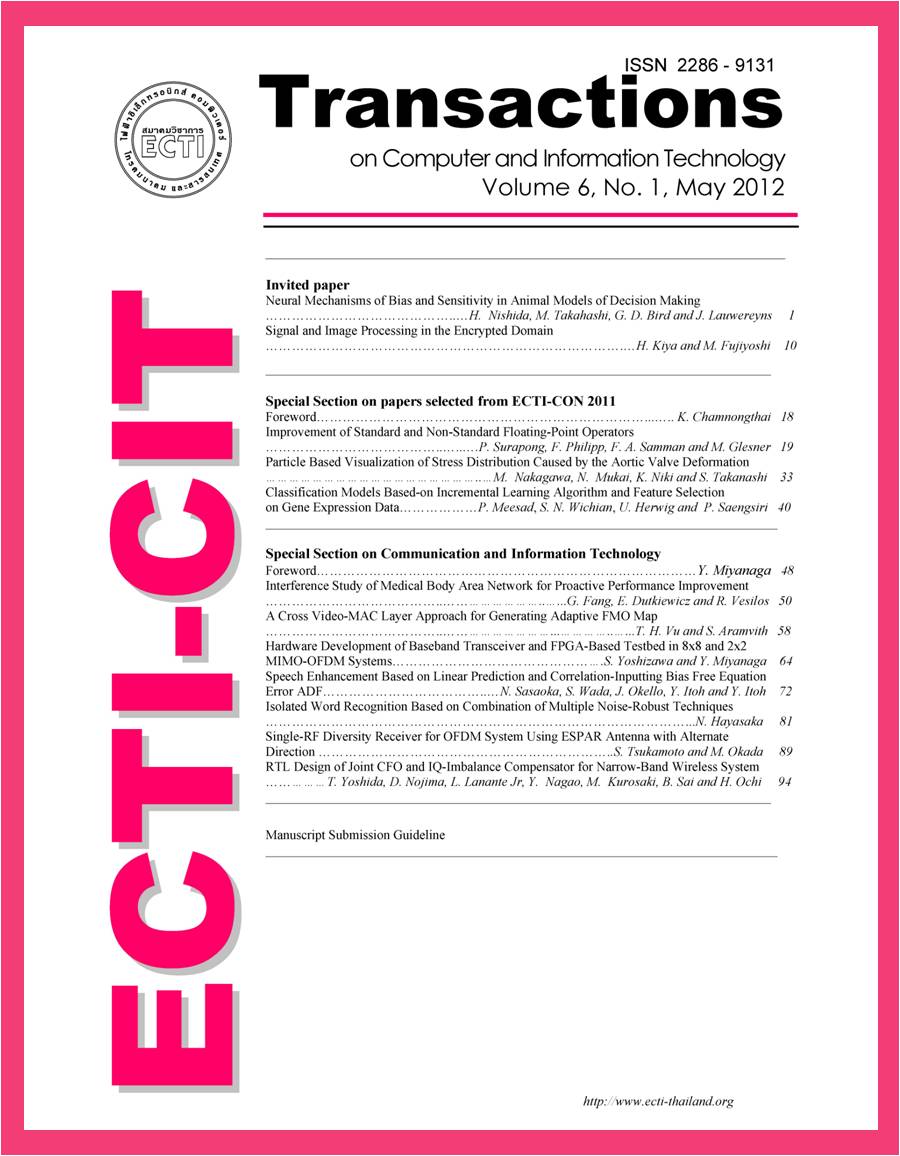Particle Based Visualization of Stress Distribution Caused by the Aortic Valve Deformation
Main Article Content
Abstract
Medical and engineering technologies have developed the surgical simulators, which allow users to train for surgical skills. To perform the aortic valve replacement, which is one of the cardiovascular surgeries, it is necessary to examine not only the timing of the heart pulsating but also the stress distribution on the aortic valve. For pre-operative planning, we
have visualized the stress on the aortic valve due to the deformation of the aorta and blood stream. In our research, simulations of the deformation of the aortic valve and blood stream have been performed with 3D aorta and aortic valve models, which are composed of particles. In the simulation, the aortic valve and blood models are treated as an elastic body and Hershel-Bulkley fluid, respectively. We have used MPS (Moving Particle Semi-implicit) as the particle method; however, it is known that MPS method cannot specify the stress because the pressure among the particles on the free surfaces is zero. Then, in this paper, we propose more stable pressure calculation by considering virtual particles. As a result, visualization of the stress distribution on the aortic valve has been achieved.


